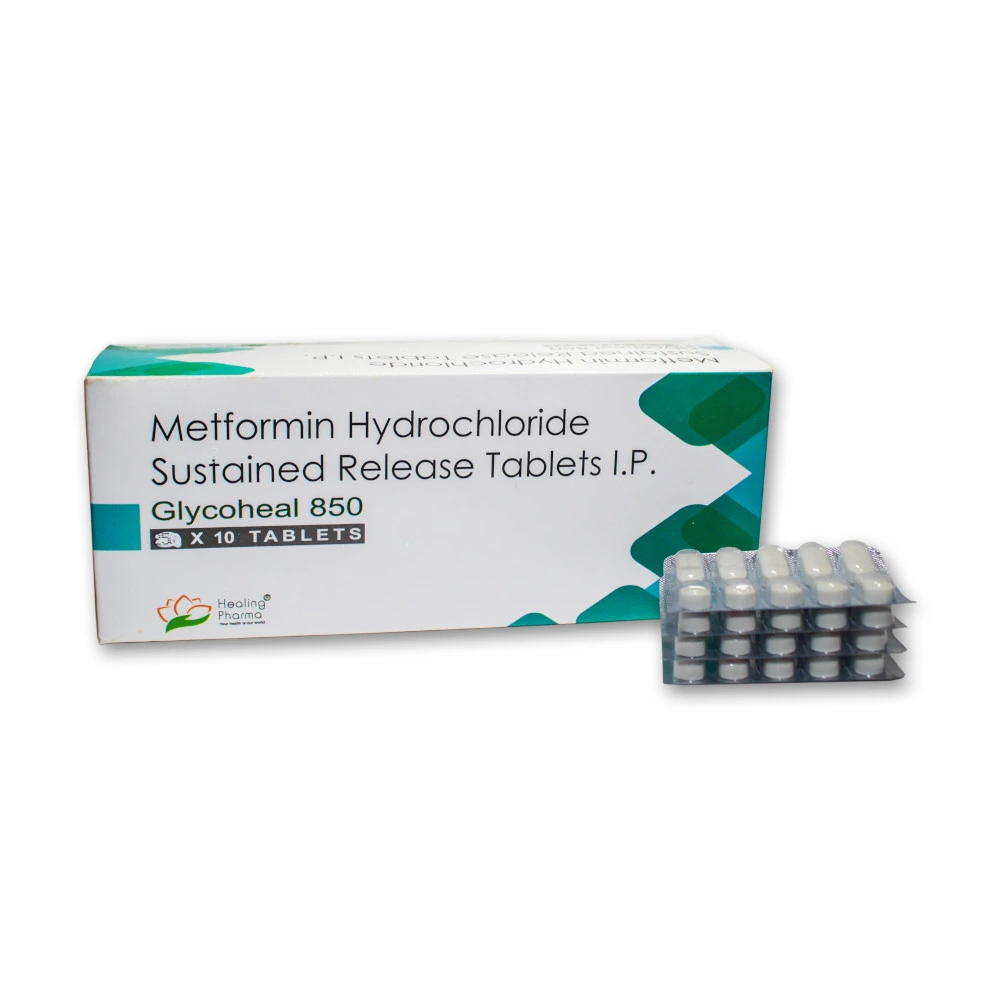“Metformin 850 mg: Full Guide to Uses, Dosage & Side Effects”
✅ What Is Metformin?
Metformin is an oral medication used primarily to treat Type 2 Diabetes Mellitus (T2DM). It belongs to the biguanide class of antidiabetic agents and works by lowering blood glucose levels. It’s a first-line treatment for Type 2 diabetes, especially in overweight or obese individuals.
✅ Indications and Uses
Metformin 850 mg is commonly prescribed for:
| Condition | Purpose |
| Type 2 Diabetes Mellitus | First-line treatment to improve glycemic control |
| Polycystic Ovary Syndrome (PCOS) | Off-label use to improve insulin sensitivity |
| Prediabetes | Prevent progression to diabetes in high-risk patients |
| Metabolic Syndrome | Improve glucose metabolism and insulin resistance |
| Weight Management | Off-label benefit in insulin-resistant patients |
✅ How Metformin Works (Mechanism of Action)
Metformin lowers blood sugar by:
- Reducing hepatic glucose production (less glucose from the liver)
- Improving insulin sensitivity in muscles and fat
- Slightly decreasing intestinal glucose absorption
Unlike insulin or sulfonylureas, metformin does not increase insulin secretion, which reduces the risk of hypoglycemia.
✅ Dosage and Administration
🔹 Typical Adult Dosage:
- Starting Dose: 500 mg once or twice daily
- 850 mg tablets: Often prescribed once to twice daily with meals
- Maximum Dose: 2550 mg/day (divided into 2–3 doses)
🔹 How to Take:
- Take with meals to minimize gastrointestinal side effects
- Swallow whole with water—do not crush or chew
- Extended-release forms should be taken once daily with dinner
Gradual dose increases (every 1–2 weeks) are recommended to improve tolerance.
✅Side Effects
🔹 Common Side Effects:
- Nausea
- Diarrhea
- Abdominal discomfort
- Flatulence
- Loss of appetite
- Metallic taste
These often resolve over time or with dose adjustment.
🔹 Serious Side Effect (Rare):
- Lactic Acidosis – A life-threatening buildup of lactic acid in the blood. Risk increases with:
- Kidney disease
- Liver disease
- Dehydration
- Alcohol use
- Severe infections
⚠️ Symptoms of lactic acidosis include weakness, muscle pain, difficulty breathing, and dizziness. Emergency care is needed.
✅ Contraindications
Do not use Metformin 850 mg in the following situations:
- eGFR <30 mL/min/1.73m² (renal failure)
- Unstable heart failure
- Liver disease
- Acute metabolic acidosis
- Severe dehydration
- Before/after contrast dye imaging (temporarily stop metformin)
✅ Drug Interactions
| Drug | Interaction |
| Alcohol | Increases risk of lactic acidosis |
| Contrast dye (iodinated) | May impair kidney function—stop metformin temporarily |
| Cimetidine | May increase metformin concentration |
| Other antidiabetics | Combined use may increase risk of hypoglycemia |
| ACE inhibitors/diuretics | May affect kidney function and metformin levels |
✅ Benefits of Metformin 850 mg
- Weight-neutral or modest weight loss
- Low risk of hypoglycemia
- Improves insulin sensitivity
- May reduce cardiovascular disease risk
- May improve fertility in PCOS patients





Reviews
There are no reviews yet.